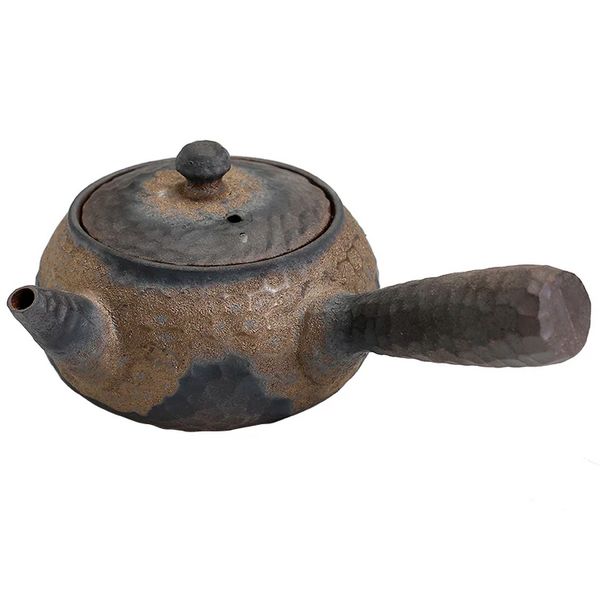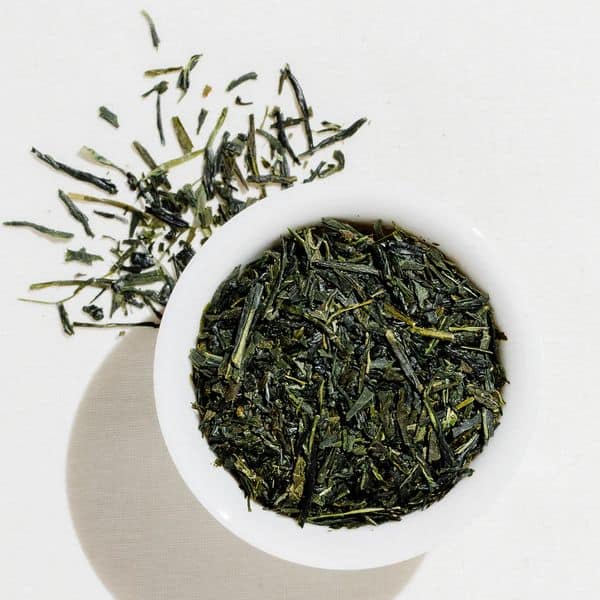Sencha is by far the most popular tea in Japan, representing about 80% of the tea produced in the country. The flavor depends on the season and the area where it is produced, with the first flush of the year considered the most delicious. A quality tea will have a greenish golden color.
One of the most appealing aspects of sencha is the ability to change flavor by altering the temperature of the water, with a higher water temperature producing a more astringent tea and a cooler temperature resulting in a more mellow flavor.
Table of Contents
Where To Buy Sencha
You can buy this tea in any specialty tea shop or through a number of online vendors. If you are unsure where to begin, you can check out some of my recommendations below.
How To Prepare Sencha Tea
The preparation instructions given here are for loose leaf teas. For tea bags, you can generally just follow the instructions given on the box.
Like most green teas, this one should be steeped in cooler water than black or oolong teas. A temperature of 80° C (176° F) is a good starting point. For these instructions, I’m going give the traditional Japanese preparation method which assumes you are using a simple stove-top kettle.
Heating water to the desired temperature becomes much simpler if you use a water boiler/warmer or an electric kettle with a variable temperature setting.
Personally, I recommend this Cuisinart kettle, because it has presets for every type of tea, so you always get the perfect temperature:
Sencha is best brewed using a traditional Japanese teapot, like a kyusu:
Or a cast iron tetsubin:
You can use any teapot and still get a perfectly good cup, though
Brewing Instructions
- Pour enough boiling water into the empty teapot to fill everyone’s cup. The teapot should NOT contain any tea leaves at this point.
- Pour the water into each cup, filling it to the desired level (usually about 80% to 90% full). This will cool the water from boiling temperature to the desired 80° C (176° F).
- Put about one large teaspoon of tea leaves into the empty teapot for each cup of tea. The teapot I am using comes with an infuser, but if yours doesn’t, you can put the leaves directly in the pot.
- Pour the water in the teacups back into the teapot.
- Let the tea steep for one minute.
- Pour a small amount of tea into the first cup, then pour the same amount into every other cup. Continue filling the cups a little at a time, making sure that each cup contains the same amount of the weaker first pours and the stronger last drops. DO NOT fill one cup completely and then move on to the next cup.
- Continue pouring until the teapot is completely empty. You want the leaves to be as dry as possible to ensure a quality second infusion
- For the second infusion, you do not need to add any fresh leaves. Pour boiling water from your kettle directly into the cups, wait about 30 seconds, then pour the water onto the leaves in the teapot. This will ensure a higher water temperature than you used for the first infusion.
- Let the tea steep 20 to 30 seconds, then pour the brew into the cups, alternating cups as before. Distribute all the liquid, leaving the leaves as dry as possible.
- For the third infusion, repeat the instructions for the second, but steep for one to three minutes, depending on the quality of the tea you are using.
- Whether you want a fourth infusion will also depend on the quality of your tea. Try it once and see how it tastes.
Use the amounts given in these instructions as a rough guide. If you find the resulting tea too weak, add more tea leaves; if it is too strong, reduce the amount of leaves used. Similarly, try increasing or decreasing the steeping times.
If the tea is too mild, increase the water temperature; if it is too bitter, reduce the temperature.
Basically, you’ll want to keep experimenting until you come up with the perfect brew for your particular taste.
When you do, all that work will be worth it. This is the one tea I drink every day—I absolutely love it and I hope you will too!
If the complicated instructions make it sound like you’ll be unable to get a good brew, never fear. The following video will show you that you can simplify the whole process and not be very exact with any of it, and still end up with a great-tasting cup.
Best Sencha Teas
Most Convenient
Many people already have an account with Amazon.com so it is probably the easiest place to buy tea online. They have some decent teas, but their selection of higher quality teas is generally lacking, especially when it comes to loose leaf versions.
Their best offering is the organic sencha by Ocha and Co. Ocha’s teas are always good, but they do cost a bit more.
For the best value on Amazon, try this tea from Changju. It’s a larger bulk bag, but it costs a lot less per ounce.
Best Value
Personally, I prefer to buy from specialty tea shops online. I generally get this sencha from Art of Tea.
It’s a high quality tea for a reasonable price and, in my opinion, the best bargain I’ve seen online. They also offer a cheaper and non-organic alternative to their premium organic sencha.
More Information About Sencha
Sencha is a Japanese green tea and as such, it is steamed to stop the oxidation process. That is what differentiates Japanese green teas from Chinese ones. Most Chinese green teas are roasted or fried, instead of steamed (naturally, there are exceptions; some Chinese teas are steamed and some Japanese ones are roasted).
What differentiates sencha from other common Japanese green teas is that sencha leaves are grown in full sunlight, while gyokuro and matcha leaves are grown in the shade.
Bancha is also grown in sunlight, but it is made from larger, more mature leaves, while sencha is made from upper shoot leaves from the first or second flush. Our article on the difference between bancha and sencha has more.
Using young leaves is what gives sencha its delicate flavor. That said, it has the unique property of changing greatly, depending on the temperature of water used during brewing. It also differs based on the length of the steaming time. Let’s take a look at how it is processed.
Processing
Once the tea leaves have been picked, they are fanned and humidified. Damp air is fanned over them to ensure they maintain their moisture and to dissipate the heat they give off after being picked.
Next, the leaves are steamed to stop the oxidation process. Steaming is quick (generally less than a minute), but varying the steaming time only slightly has a great affect on the final product.
Longer steaming leads to a darker brew with a fuller and smoother taste, while shorter steaming gives a lighter brew with a clear and more astringent flavor.
After steaming, the leaves are rapidly cooled by air blowing over them. This keeps them from losing their color, flavor and aroma. Then the leaves are pressed and rolled, while hot air is blown over them to dry them out a bit.
The leaves are rolled three times in total, with the final rolling done with all the leaves going in the same direction. This is what gives them their needle-like appearance. They are then dried one more time and are finally ready.
Ready for what? Secondary processing. The leaves are rolled, shaped and dried some more until they are ready for packaging and shipping off to stores.
Special Types Of Sencha
There are many different types of sencha. The following two are both common and well-regarded.
Shincha
Shincha literally means “new tea” and refers to sencha made from leaves harvested during the first month. It is also referred to as ichibancha (literally “first-picked tea”). The young leaves smell fresher and contain less of the bitter cathechins and caffeine, but a high amount of amino acids.
Shincha has a high nutritional content and a sweet, grassy flavor. It is highly prized, but only available for a limited time in Japan. Outside of Japan, it is difficult to find.
Some other terms to know are kocha (old tea, meaning tea from previous years), nibancha (second-picked tea) and sanbancha (third-picked tea).
Kabusecha
Kabusecha literally means “covered tea” and refers to sencha that has been grown in the shade instead of in full sunlight. The shading makes it milder than regular sencha.
A screen is set up to cover the tea plants about one week before they are ready to be picked. This blocks off any direct sunlight. If this sounds like gyokuro to you, it is very similar. The difference lies in the length of shading. Gyokuro is shaded for 20 days, while kabusecha is shaded for 10.







Leave a Reply